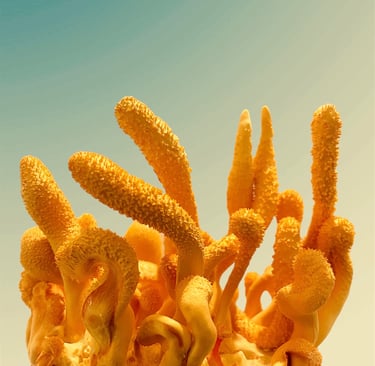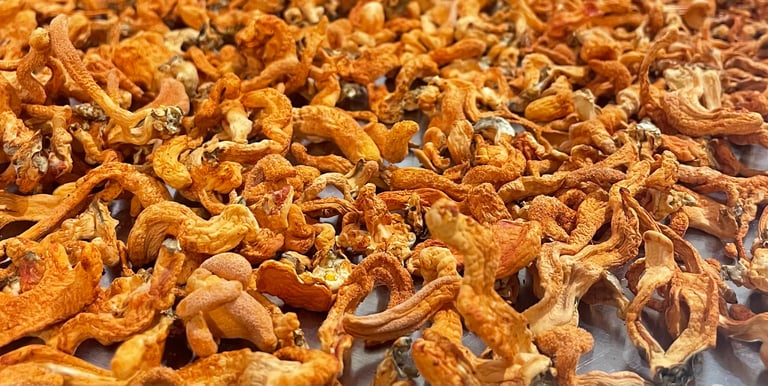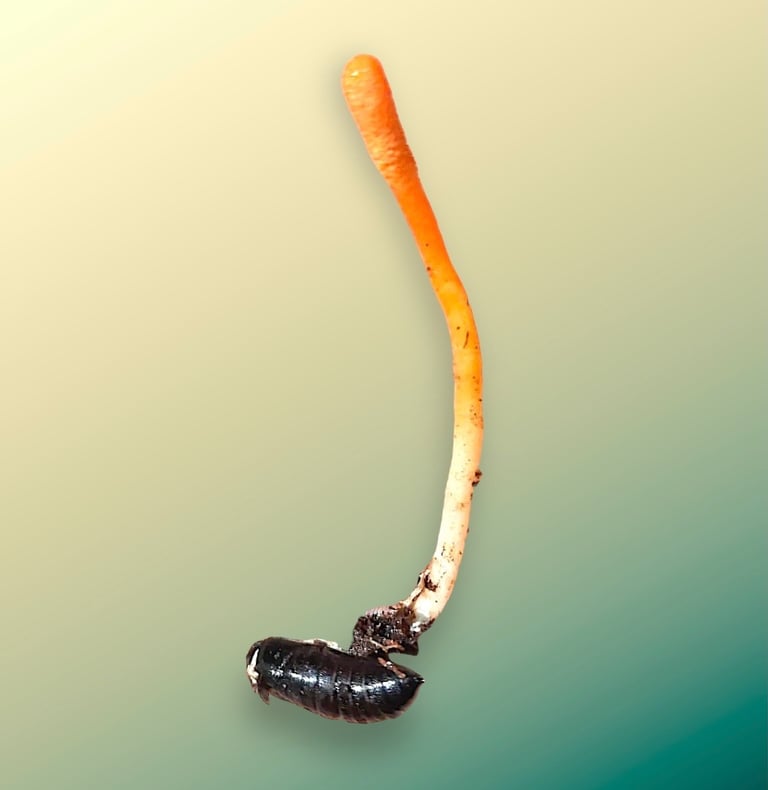Among the fungi, Cordyceps has become well known because of its extraordinary life cycle which often involves a parasitic interaction with insects. Cordyceps, however, remains unique in its ability to intricately manipulate the behaviour of these hosts leading to different occurrences that culminate into distinct fruiting bodies.
Cordyceps' lifecycle starts with microscopic spores attaching to various arthropods such as insects. After attachment, germination of the spores occurs and the fungal mycelium infiltrates into the host's body. A fascinating ballet commences between the fungus and its unwitting victim. The Cordyceps mycelium takes charge by manipulating the host in ways that seem strange like climbing up high places. Such behavioral manipulation tends to enhance their dispersal.
As it advances through this stage, mycelium absorbs nutrients from the host killing it eventually. Following death of its hosts, Cordyceps develops an obvious fruiting body which sometimes appears as a stalk growing out of a cadaver infected insect. This structure contains special cells called perithecia where spores are housed.
Beyond its role in the intricate web of ecological relationships, Cordyceps has sparked interest for its potential medicinal properties. Some species, such as militaris and sinensis, within Cordyceps genus have been traditionally used in various cultures for over 3000 years for purported health benefits, leading to increased scientific exploration of their pharmacological potential.
This introduction merely scratches the surface of the multifaceted world of Cordyceps. As we delve deeper, we uncover not only the intricate details of its lifecycle but also its impact on ecosystems and the intriguing avenues of research exploring its applications in medicine and beyond.
The Forgotten Himalayan Gold
Cordyceps
Cultivation of Cordyceps
The popularity of Cordyceps militaris is increasing due to the demand for this fungus in traditional medicine and cooking practices. Nevertheless, unlike other species that mainly parasitize insects in the wild, C. militaris can be cultured on different substrates and is therefore convenient for indoor conditions.
1. Substrate Preparation: Cultivation usually starts by preparing a proper substrate. Examples of common substrates are grain-based mixtures like rice, millet, oats or wheat with nutrient supplementation.
2. Inoculation: The sterilized prepared substrate eliminates growth of other microorganisms. Thereafter mycelium or spores of C.militaris are subsequently introduced to the substrate for incubation.
3. Incubation: The inoculated substrate is placed within controlled environment with right temperature and humidity required for mycelial development. The phase allows mycelium to colonize the substate.
4. Primordia Formation: After incubation, controlled environmental conditions such as light or temperature elicit primordial formation - the initial stage of fruiting body development by mycelia.
5. Fruiting Body Development: Fruiting bodies, resembling the characteristic shape of wild Cordyceps, begin to emerge from primordia. Adequate humidity and ventilation are essential for the growth of mature fruiting bodies.
6. Harvesting: At maturity stage, when they have taken on their natural coloration, it is time to harvest them. Usually, you just gently cut or twist the ripe fruiting bodies from the base.
7. Drying and Storage: Drying the harvested Cordyceps militaris contributes to long shelf life and retains its medicinal characteristics. To keep the mushroom's quality constant, different drying methods such as a low temperature dehydrator are used.
8. Quality Control: The technique employed in this system prevents contamination, gives better quality than the wild type Cordyceps and ensures uniformity across batches.
The cultivation of Cordyceps militaris in indoor environments allows for sustainable alternatives to harvesting in nature while enabling optimization of yield and quality within restricted settings. That has made this particular mushroom accessible through more channels with various uses ranging from traditional medicine to nutraceutical and cosmetics to food among others.






Scientific literature about Cordyceps militaris and its benefits
Enhance your knowledge and understanding of this fascinating mushroom.


